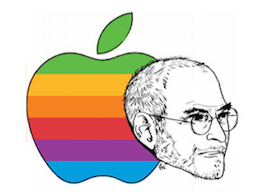Has design thinking come of age?
Not really.
Design thinking has been maturing for some time. Thirty years ago we were missionaries in the desert. Today people are calling us.
For my colleagues and myself, design thinking has always been about including people who think differently into an expanded team of explorers. We’re about exploring the world or different dimensions of reality with both the analytic and emotional or psychological parts of our brain. It’s about collaboration and an intentional intermingling of sensibilities and approaches. Using right- and left- brained people to solve problems together.
Design thinking is about being intellectually rigorous but using all of the intellect. It’s valuing all of the drivers that make us fully human.
The realization of the importance of this approach is something that we had decades ago, or even before we started Continuum.
What is new, it seems to me, is that management thinking has come of age. The fact that Harvard Business Review is currently running a cover story called "Design Thinking Comes of Age" is proof of that.
What happened?
Steve Jobs happened.
Jobs was a paramount example of design thinking, and Apple was the organization that changed the dynamic. Remember, this company that was close to being out of business 15 years ago. It was run by this guy who had started it, was defrocked, and came back and leapfrogged everybody else by doing things that were not based on almost any of the then-dominant paradigms of management.
I met Jobs years ago when we were both part of the International Design Conference in Aspen. I was a board member, and at the end of one of our conferences, we held a board meeting. Jobs burst into the room and for the next hour he had an animated debate on the nature of design with other board members. I remember seeing him wander around the conference and being both engaged and ruffled at times. He had very clear ideas about the importance of design—not being superficial but being fundamental to everyday life. And this was before his return to Apple.
Jobs is gone, but Jonathan Ive and Tim Cook at Apple have gotten religion. They believe in it, because it’s worked. That success has swayed not just business but the people whom business turns to for cues on how to proceed.
Apple is an organization that’s relentless in listening to what people cannot articulate and in anticipating what they will respond to. They excel at finding a wheel, and making it a whole lot better. Honestly: What did Apple do that was fundamentally innovative?
They weren’t even really the first there. They differ in everything that they’ve done has been in what would commonly be called “design”—but design that’s informed and enriched by a lot of subtleties that connect the people.
There are other companies before Apple that used design, but always it was just an ingredient that was added to something. It wasn’t fundamental to the organization.
Until Apple’s success, designers were always spoken to in this manner: “OK, we rational folks have gotten you nice and healthy and here’s the plastic surgeons to make you look younger and have more hair. Or let’s call in the undertaker to make it look like you’re not dead.”
Now, design thinking is about a company’s holistic health—and that should inform the next generation of leaders. I would argue that the chief designer of Apple was Steve jobs, not Jonathan Ive. Ive was a co-conspirator who possessed skill sets that Jobs didn’t have.
Relentless pursuit of a wonderful whole experience is what Jobs was focused on, and got everybody else focused on. Managerial thinking got rid of him in the past, and now we all see that mistake. And have adjusted our thinking.




